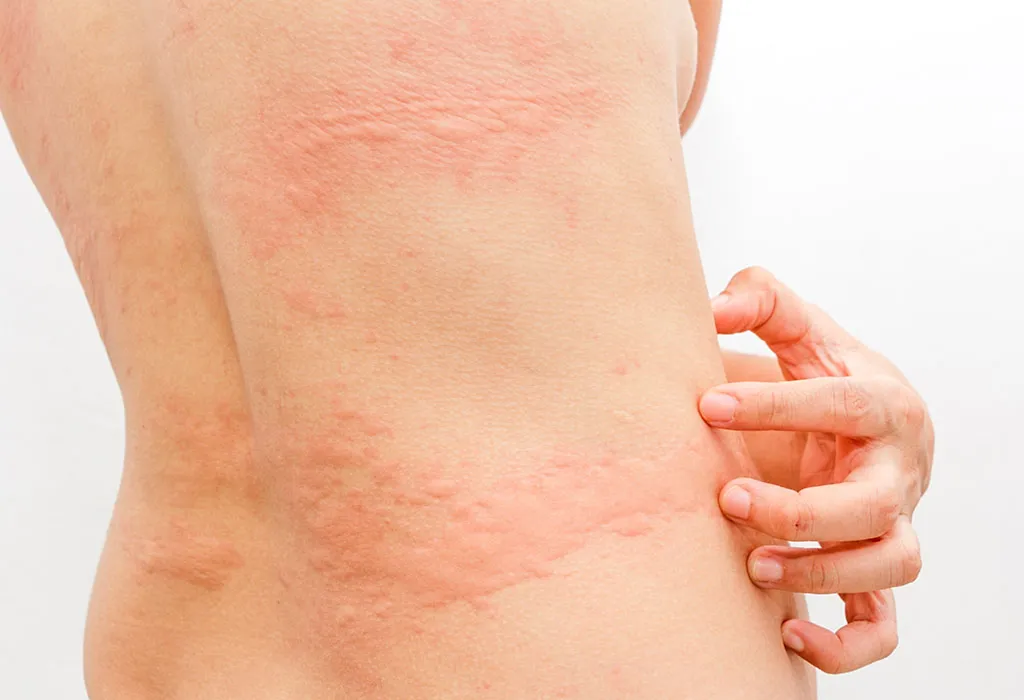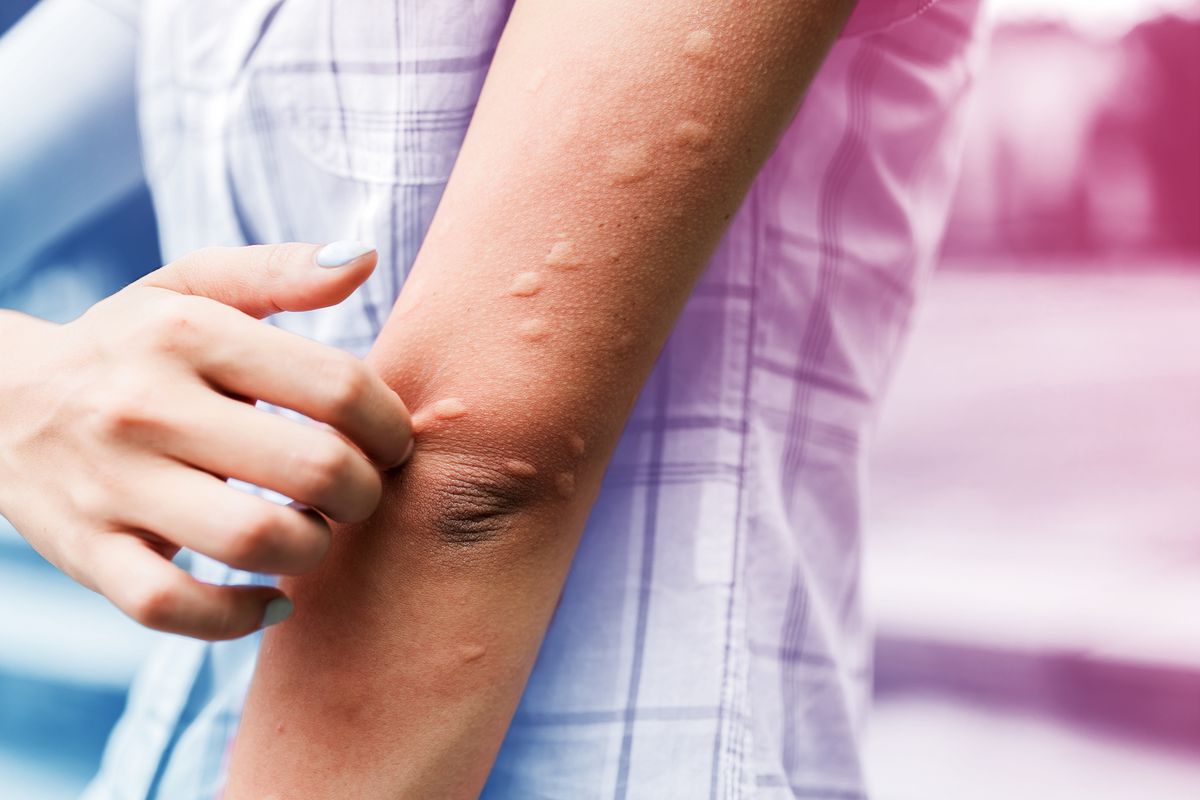Anaphylaxis if it is left untreated can lead to loss of consciousness and even cardiac arrest. How do you treat an allergic reaction to fabric.

Allergic Reaction On Face Treatment Causes And Symptoms
To treat skin rash caused by an allergic reaction apply an over-the-counter topical treatment like hydrocortisone to the affected area twice daily for 2 weeks.

How to get rid of rash allergic reactions. One of the best ways to help is to stop your exposure to the allergen. It also relieves the inflammation and itching that face rashes end up causing. You can also add white vinegar to your rinse cycle to try to further remove any chemicals.
Bentonite clay benefits the body by helping it to expel toxins increasing immunity and reducing inflammation. Rinsing the affected area with warm or cool water can also help. If the symptoms of allergy are mild you can take an over the counter antihistamine or decongestant to get rid of its symptoms.
Mix water and apple cider vinegar thoroughly. You can do this by putting the suspicious substance twice a day to your skin like on the back side of your elbow. Use a mild soap to avoid harsh chemicals that may worsen allergic reactions.
Make sure you follow the actual usage of the suspected allergen when putting it on your skin. Using unscented non-fragrance laundry soap and body products. There are a number of ways you can avoid allergic reactions to your laundry detergent.
You can be sure to double rinse your clothing and use fragrance-free dye-free liquid detergent which will rinse off better. In many cases drug rashes go away on their own once you stop taking the drug that caused your rash. Usually allergic reactions can be prevented either by taking antihistamines before coming into contact with allergens or by avoiding the allergens.
Usage of baking soda dries out any face rashes. So by applying cider vinegar you can get rid of the burning and itching sensation of the allergic rash. If you are experiencing a rash or hives caused by an allergic reaction calamine lotion may help soothe the itching and discomfort.
Calamine and zinc oxide are both known anti-itch topical medications. Antihistamines are available for purchase over. Apply wet compresses on the area to soothe the skin and bring down the rednessOver-the-counter medications.
If the rash is very itchy an antihistamine or oral steroid can help manage the itching until. Avoid scratching or rubbing the rash as this can aggravate your symptoms and delay healing. Food allergy rashes eventually subside once the underlying reaction stops.
Avoiding scratching or touching the affected area Using a cold compress to soothe the rash Taking cool or tepid showers. 8 When it comes to how to get rid of a rash on your face if youre using bentonite clay or any other natural remedy just make sure to avoid the eye area. Calamine lotion contains a mixture of calamine zinc oxide and other ingredients.
If the rash is caused by. To prevent an allergic rash a person should avoid coming into contact with known or common allergic triggers by. If you have an allergic reaction rash there are some simple things you can do to help ease and reduce symptoms such as.
Take one tablespoon of apple cider vinegar and add it into a cup of warm water. Severe allergic reactions can cause a condition called anaphylaxis. From this youll find out if you have a reaction or not.
Now take 2 cotton balls and soak it into the solution of apple cider vinegar. Soak a clean washcloth in cool water then apply to the rash area for up to 10 minutes.

Allergic Reactions And Rashes Causes Diagnosis And Treatment

How Do You Get Rid Of An Allergic Reaction Rash Oak Brook Allergists

Hives While Breastfeeding Treatment Home Remedies
:max_bytes(150000):strip_icc()/allergic-reactions-to-hand-washing-83198-16b965cead824d6e8299059900466322.png)
Allergic Reactions To Hand Washing

How Do You Get Rid Of An Allergic Reaction Rash Oak Brook Allergists

Hives Causes Risks Prevention And Pictures

Hives 5 Causes You Wouldn T Expect Health Com

Allergy And Asthma Associates How Do You Get Rid Of An Allergic Reaction Rash Hunterdon Pulmonary Sleep

What Is An Allergy Sensitizer And How Does A Chemical Become One